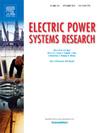Adaptive topology identification with dynamic update mechanisms for flexible interconnected distribution networks
IF 3.3
3区 工程技术
Q2 ENGINEERING, ELECTRICAL & ELECTRONIC
引用次数: 0
Abstract
The flexible interconnection in the distribution network will arise new challenges in terms of network structure and operation characteristics. The complexity arises as topology changes become less apparent due to the support of soft open points (SOPs) for nodal power and voltage. Additionally, outages may not be reported after switches trip, making detection more difficult. To address these challenges, a two-stage topology identification (TI) framework for flexible interconnected distribution networks is investigated, integrating historical and real-time TI. For historical data samples that include multiple topology categories, all topology categories and the topology type to which each sample belongs are identified based on a modified expectation-maximization (EM) algorithm. Then, the topology classifier is trained to perform the real-time TI based on historical labeled samples, and the credibility of obtained real-time identification results is analyzed. Furthermore, different classifier update mechanisms are designed to accommodate the emergence of new topology categories driven by the integration of renewable energy sources (RESs) and growing load demands in distribution networks. Finally, the feasibility and effectiveness of the proposed framework and models are validated through testing on both IEEE 33-bus and IEEE 118-bus test systems. The framework demonstrates remarkable adaptability across diverse network scenarios, including flexible interconnected networks, RES-penetrated networks, and networks with latent faults. Experimental results and performance evaluations confirm that the proposed framework exhibits superior practical applicability.
求助全文
约1分钟内获得全文
求助全文
来源期刊

Electric Power Systems Research
工程技术-工程:电子与电气
CiteScore
7.50
自引率
17.90%
发文量
963
审稿时长
3.8 months
期刊介绍:
Electric Power Systems Research is an international medium for the publication of original papers concerned with the generation, transmission, distribution and utilization of electrical energy. The journal aims at presenting important results of work in this field, whether in the form of applied research, development of new procedures or components, orginal application of existing knowledge or new designapproaches. The scope of Electric Power Systems Research is broad, encompassing all aspects of electric power systems. The following list of topics is not intended to be exhaustive, but rather to indicate topics that fall within the journal purview.
• Generation techniques ranging from advances in conventional electromechanical methods, through nuclear power generation, to renewable energy generation.
• Transmission, spanning the broad area from UHV (ac and dc) to network operation and protection, line routing and design.
• Substation work: equipment design, protection and control systems.
• Distribution techniques, equipment development, and smart grids.
• The utilization area from energy efficiency to distributed load levelling techniques.
• Systems studies including control techniques, planning, optimization methods, stability, security assessment and insulation coordination.
 求助内容:
求助内容: 应助结果提醒方式:
应助结果提醒方式:


